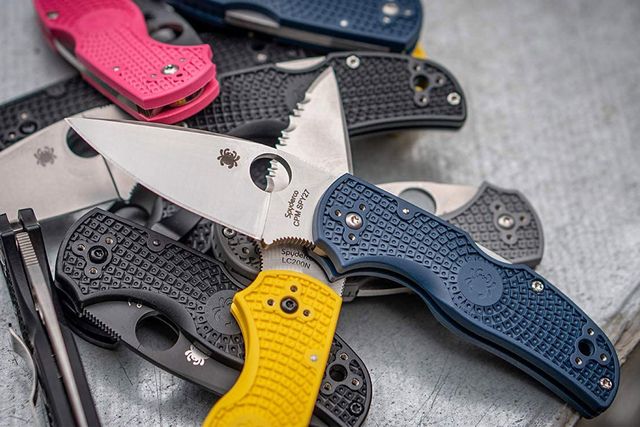With names like Vanax SuperClean, Elmax and M390, the current reality of knife steel seems to be mimicking science fiction. All three of these steel variants are colloquially known as "super steels," a class whose roster includes only the highest quality metal available. The term has been around for decades and is becoming increasingly common, but what actually qualifies steel to earn "super" as a descriptor?
What Is Super Steel?
"There definitely is a performance difference — it's quantifiable," says Martin Mills, who manages Benchmade's technology center. The knife industry judges steel based on traits like corrosion resistance, edge retention, ability to withstand sudden impact (called toughness) and wear resistance, among others.
"When people refer to super steels, it's largely edge retention," explains Mills, referring to a blade's ability to maintain a sharp cutting edge through regular use. (Everlasting sharpness does seem like something out of a fantasy novel.) Another key quality is corrosion resistance, a metal's immunity from rust and acidic degradation.
The thing is, knife steel traits are often inversely related. Such is often the case with edge retention and corrosion resistance; dialing one up results in the other's expense. But some of the manufacturing processes resulting in today's super steels subvert the tendency.
A very basic description of conventional casting is that a smith tosses a few different metals into a vessel, heats them until they melt into a liquid and combine, and pours that liquid into a mold for cooling. Voilá, a steel alloy.
It's a centuries-old process; powder metallurgy, however, is not. The technology by which a machine extrudes liquid metal through a tiny nozzle and cools it rapidly with liquid or gas so that it hardens as a particle was only commercialized in the 1970s. It's a far more fine-tuned process that allows metallurgists to adjust a steel's element recipe — in ways that would cause it to fail if attempted through conventional casting.
Industrial innovations like powder metallurgy are what allow knife makers to create blades with maxed-out properties, and continuing advancements have given rise to super steel. Mills describes how some manufacturers are figuring out how to force nitrogen into steel by working with a furnace that sits in a pressure chamber similar to those that SCUBA divers are placed in if they get the bends.
"That requires another level of equipment and processing," he says. But the result is steel that simultaneously amplifies what might otherwise be inversely related traits, like edge retention and corrosion resistance.
That said, "super steel" is by no means an official industry classification. For contrast, "stainless steel" is — a steel's recipe must include roughly 11 percent chromium to earn that grade. There is no threshold of edge retention or corrosion resistance that qualifies steel for a super ranking, though brands marketing super steel knives often describe these traits with adjectives like "extreme" and "exceptional."
Why Is Super Steel So Expensive?
As Mills describes, the advanced processes required to make steel that exhibits high and sometimes contradictory performance characteristics are far more involved than traditional methods. They're more intensive and hands-on, and they call for investment in specialized equipment. Super steels also frequently include alloys that are rarer or more difficult to mine.
That investment is on the mill's side of the equation, but working with super steel incurs costs too. Steel that exhibits excellent edge retention is also harder to grind, which forces knife makers who want to work with it to invest in new manufacturing processes, equipment and coatings.
All of these factors contribute to the price of high-end knife steel.
Should You Buy a Super Steel Pocket Knife?
When choosing what pocket knife to buy, think about what you want to use it for. Consider that a knife with a blade made of super steel will likely hold its edge for a noticeably long time, but it won't be as straightforward to sharpen when it does eventually dull. You can still do it at home; you just might need to invest in new tools, like a diamond stone-equipped sharpener.
Those who are simply looking for a utility-first knife might be better off with something more affordable that will dull faster but remain easy to sharpen. You may also want to go that route if you are prone to losing knives — that pain is a lot easier to swallow when you've spent $30 rather than $150 or more.
Where Does Super Steel Go from Here?
Because super steel is a vague classification, the term is likely to stick around. It won't always refer to the same types of steel, however. Mills offers nanotechnology as a potential frontier, imagining a process in which metallurgists go even smaller than powder, building their recipe atom by atom.
"Thirty years from now, what we are considering as super steel today is going to be average, run-of-the-mill stuff," he says. "Who knows what's going to be coming down the line?"


























